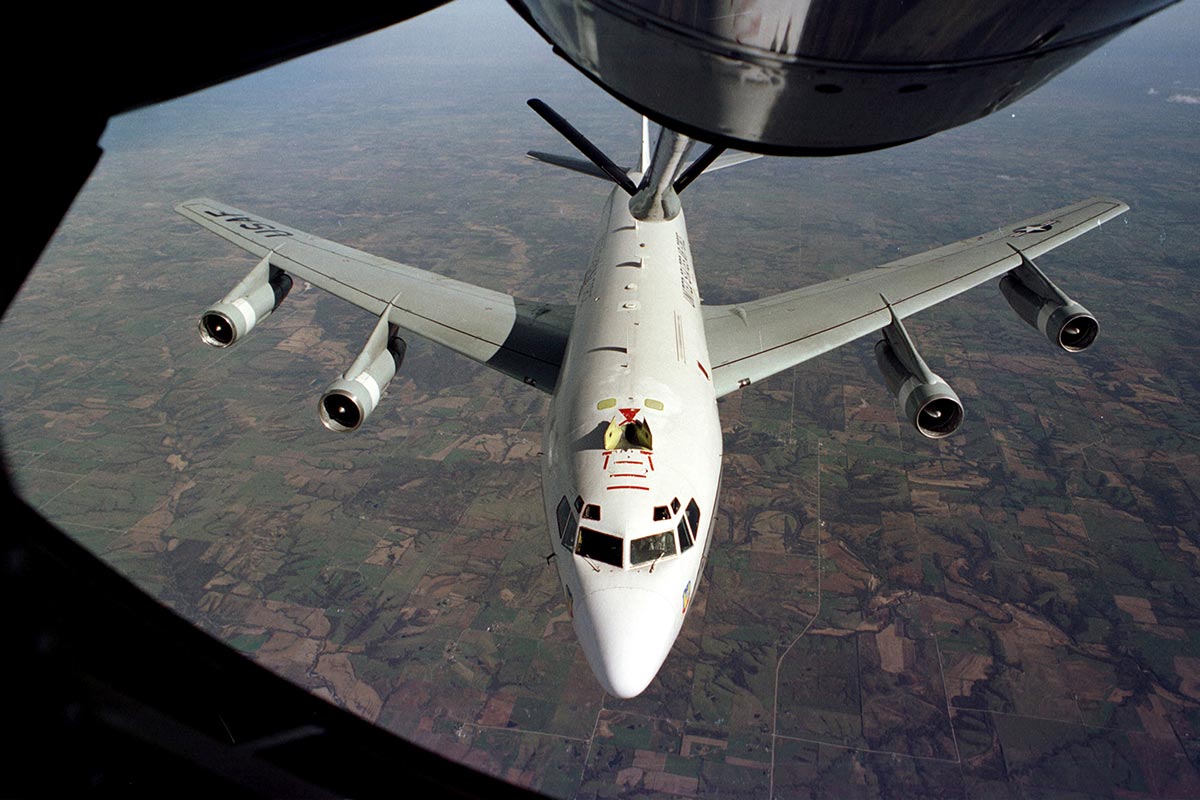Contractor: Boeing Aerospace Co.
Service: United States Air Force
Power Plant: WC-135C, Four Pratt & Whitney TF33-P9 turbofans without thrust reversers;
WC-135W, Four Pratt & Whitney TF33-P-5 turbofans with thrust reversers
Speed: 403 mph
Range: 4,000 nautical miles
Crew: Varies with mission
The WC-135 Constant Phoenix is a militarized version of the Boeing 707 commercial airliner which is used to verify compliance of the 1963 Limited Nuclear Test Ban Treaty. The WC-135W Constant Phoenix atmospheric collection aircraft supports national level consumers by collecting particulate and gaseous effluents and debris from accessible regions of the atmosphere.
The aircraft is a modified C-135B or EC-135C platform. The Constant Phoenix's modifications are primarily related to its on-board atmospheric collection suite, which allows the mission crew to detect radioactive "clouds" in real time. The aircraft is equipped with external flow-through devices to collect particulates on filter paper and a compressor system for whole air samples collected in holding spheres.
The cockpit crew is from the 45th Reconnaissance Squadron at Offutt Air Force Base, Neb., and special equipment operators are assigned to Det. 1, Air Force Technical Applications Center at Offutt AFB.
General Dwight D. Eisenhower commissioned the Constant Phoenix program on Sept. 16, 1947, when he charged the Army Air Forces with the overall responsibility for detecting atomic explosions anywhere in the world. In September 1949, a WB-29 flying between Alaska and Japan detected nuclear debris from Russia's first atomic test--an event thought not possible until mid-1950.
Beginning in August 1950, WB-50 aircraft were converted for the air-sampling mission over a two-year period. WC-135 aircraft began replacing the WB-50s in December 1965 and became the workhorse of the atmospheric collection program.
Air sampling missions were routinely conducted over the Far East, Indian Ocean, Bay of Bengal, Mediterranean Sea, the Polar regions, and off the coasts of South America and Africa. The WC-135W played a major role in tracking radioactive debris from the Soviet Union's Chernobyl nuclear plant disaster.
Currently the air-sampling mission supports the Limited Nuclear Test Ban Treaty of 1963, which prohibits any nation from above ground nuclear weapons testing. WC-135s are currently the only aircraft in the inventory conducting air-sampling operations.










